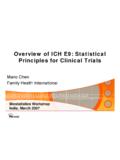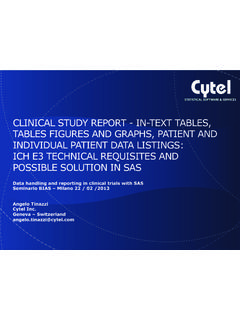Transcription of ICH HARMONISED TRIPARTITE GUIDELINE
1 INTERNATIONAL CONFERENCE ON HARMONISATION OF TECHNICAL REQUIREMENTS FOR REGISTRATION OF PHARMACEUTICALS FOR HUMAN USE ICH HARMONISED TRIPARTITE GUIDELINE statistical principles FOR clinical TRIALS E9 Current Step 4 version dated 5 February 1998 This GUIDELINE has been developed by the appropriate ICH Expert Working Group and has been subject to consultation by the regulatory parties, in accordance with the ICH Process. At Step 4 of the Process the final draft is recommended for adoption to the regulatory bodies of the European Union, Japan and USA. E9 Document History First Codification History Date New CodificationNovember 2005 E9 Approval by the Steering Committee under Step 2 and release for public consultation.
2 16 January 1997 E9 Current Step 4 version E9 Approval by the Steering Committee under Step 4 and recommendation for adoption to the three ICH regulatory bodies. 5 February 1998 E9 statistical principles FOR clinical TRIALS ICH HARMONISED TRIPARTITE GUIDELINE Having reached Step 4 of the ICH Process at the ICH Steering Committee meeting on 5 February 1998, this GUIDELINE is recommended for adoption to the three regulatory parties to ICH TABLE OF CONTENTS I. Background and Scope and II. CONSIDERATIONS FOR OVERALL clinical Trial Development Confirmatory Exploratory Scope of Primary and Secondary Composite Global Assessment Multiple Primary Surrogate Categorised Design Techniques to Avoid III.
3 TRIAL DESIGN Design Parallel Group Crossover Factorial Multicentre Type of Trials to Show Trials to Show Equivalence or Non-inferiority ..14 Trials to Show Dose-response i statistical principles for clinical Trials Group Sequential 16 Sample 16 Data Capture and 18 IV. TRIAL CONDUCT 18 Trial Monitoring and Interim 18 Changes in Inclusion and Exclusion 19 Accrual 19 Sample Size 19 Interim Analysis and Early 19 Role of Independent Data Monitoring Committee (IDMC) .. 21 V. DATA ANALYSIS 21 Prespecification of the 21 Analysis 22 Full Analysis 22 Per Protocol 23 Roles of the Different Analysis Sets .. 24 Missing Values and Outliers.
4 24 Data 25 Estimation, Confidence Intervals and Hypothesis Testing .. 25 Adjustment of Significance and Confidence 26 Subgroups, Interactions and 26 Integrity of Data and Computer Software 27 VI. EVALUATION OF SAFETY AND 27 Scope of 27 Choice of Variables and Data 27 Set of Subjects to be Evaluated and Presentation of 28 statistical 29 Integrated 29 VII. 29 Evaluation and 29 Summarising the clinical 31 Efficacy 31 Safety 32 32 ii statistical principles FOR clinical TRIALS I. INTRODUCTION Background and Purpose The efficacy and safety of medicinal products should be demonstrated by clinical trials which follow the guidance in 'Good clinical Practice: Consolidated GUIDELINE ' (ICH E6) adopted by the ICH, 1 May 1996.
5 The role of statistics in clinical trial design and analysis is acknowledged as essential in that ICH GUIDELINE . The proliferation of statistical research in the area of clinical trials coupled with the critical role of clinical research in the drug approval process and health care in general necessitate a succinct document on statistical issues related to clinical trials. This guidance is written primarily to attempt to harmonise the principles of statistical methodology applied to clinical trials for marketing applications submitted in Europe, Japan and the United States. As a starting point, this GUIDELINE utilised the CPMP (Committee for Proprietary Medicinal Products) Note for Guidance entitled 'Biostatistical Methodology in clinical Trials in Applications for Marketing Authorisations for Medicinal Products' (December, 1994).
6 It was also influenced by 'Guidelines on the statistical Analysis of clinical Studies' (March, 1992) from the Japanese Ministry of Health and Welfare and the Food and Drug Administration document entitled ' GUIDELINE for the Format and Content of the clinical and statistical Sections of a New Drug Application' (July, 1988). Some topics related to statistical principles and methodology are also embedded within other ICH guidelines, particularly those listed below. The specific guidance that contains related text will be identified in various sections of this document. E1A: The Extent of Population Exposure to Assess clinical Safety E2A: clinical Safety Data Management: Definitions and Standards for Expedited Reporting E2B: clinical Safety Data Management: Data Elements for Transmission of Individual Case Safety Reports E2C: clinical Safety Data Management: Periodic Safety Update Reports for Marketed Drugs E3: Structure and Content of clinical Study Reports E4: Dose-Response Information to Support Drug Registration E5: Ethnic Factors in the Acceptability of Foreign clinical Data E6: Good clinical Practice: Consolidated GUIDELINE E7: Studies in Support of Special Populations: Geriatrics E8.
7 General Considerations for clinical Trials E10: Choice of Control Group in clinical Trials M1: Standardisation of Medical Terminology for Regulatory Purposes M3: Non- clinical Safety Studies for the Conduct of Human clinical Trials for Pharmaceuticals. 1 statistical principles for clinical Trials This guidance is intended to give direction to sponsors in the design, conduct, analysis, and evaluation of clinical trials of an investigational product in the context of its overall clinical development. The document will also assist scientific experts charged with preparing application summaries or assessing evidence of efficacy and safety, principally from clinical trials in later phases of development.
8 Scope and Direction The focus of this guidance is on statistical principles . It does not address the use of specific statistical procedures or methods. Specific procedural steps to ensure that principles are implemented properly are the responsibility of the sponsor. Integration of data across clinical trials is discussed, but is not a primary focus of this guidance. Selected principles and procedures related to data management or clinical trial monitoring activities are covered in other ICH guidelines and are not addressed here. This guidance should be of interest to individuals from a broad range of scientific disciplines. However, it is assumed that the actual responsibility for all statistical work associated with clinical trials will lie with an appropriately qualified and experienced statistician, as indicated in ICH E6.
9 The role and responsibility of the trial statistician (see Glossary), in collaboration with other clinical trial professionals, is to ensure that statistical principles are applied appropriately in clinical trials supporting drug development. Thus, the trial statistician should have a combination of education/training and experience sufficient to implement the principles articulated in this guidance. For each clinical trial contributing to a marketing application, all important details of its design and conduct and the principal features of its proposed statistical analysis should be clearly specified in a protocol written before the trial begins.
10 The extent to which the procedures in the protocol are followed and the primary analysis is planned a priori will contribute to the degree of confidence in the final results and conclusions of the trial. The protocol and subsequent amendments should be approved by the responsible personnel, including the trial statistician. The trial statistician should ensure that the protocol and any amendments cover all relevant statistical issues clearly and accurately, using technical terminology as appropriate. The principles outlined in this guidance are primarily relevant to clinical trials conducted in the later phases of development, many of which are confirmatory trials of efficacy.
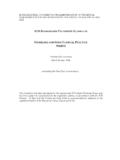
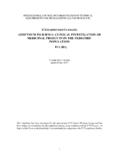
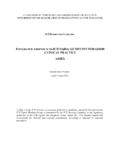
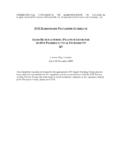
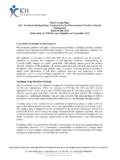
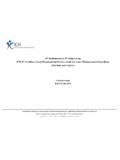
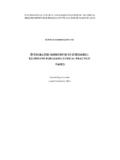
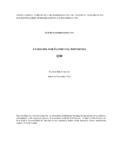
![[ICH E2F] [EXAMPLE DSUR – PHASE III …](/cache/preview/1/3/5/f/e/1/c/f/thumb-135fe1cf2cdb82799c462ad0ea089c48.jpg)

